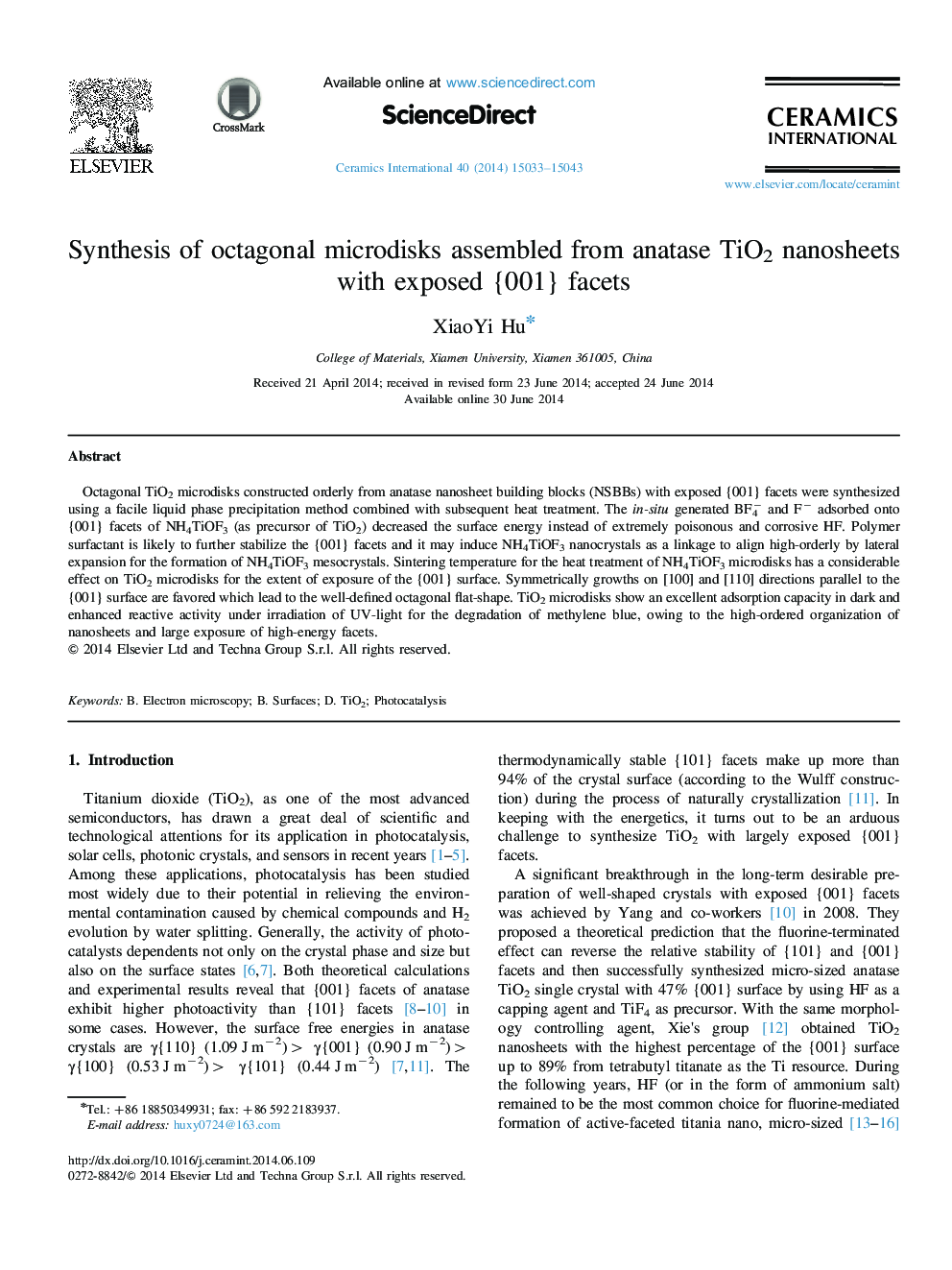| Article ID | Journal | Published Year | Pages | File Type |
|---|---|---|---|---|
| 1461251 | Ceramics International | 2014 | 11 Pages |
Octagonal TiO2 microdisks constructed orderly from anatase nanosheet building blocks (NSBBs) with exposed {001} facets were synthesized using a facile liquid phase precipitation method combined with subsequent heat treatment. The in-situ generated BF4− and F− adsorbed onto {001} facets of NH4TiOF3 (as precursor of TiO2) decreased the surface energy instead of extremely poisonous and corrosive HF. Polymer surfactant is likely to further stabilize the {001} facets and it may induce NH4TiOF3 nanocrystals as a linkage to align high-orderly by lateral expansion for the formation of NH4TiOF3 mesocrystals. Sintering temperature for the heat treatment of NH4TiOF3 microdisks has a considerable effect on TiO2 microdisks for the extent of exposure of the {001} surface. Symmetrically growths on [100] and [110] directions parallel to the {001} surface are favored which lead to the well-defined octagonal flat-shape. TiO2 microdisks show an excellent adsorption capacity in dark and enhanced reactive activity under irradiation of UV-light for the degradation of methylene blue, owing to the high-ordered organization of nanosheets and large exposure of high-energy facets.
